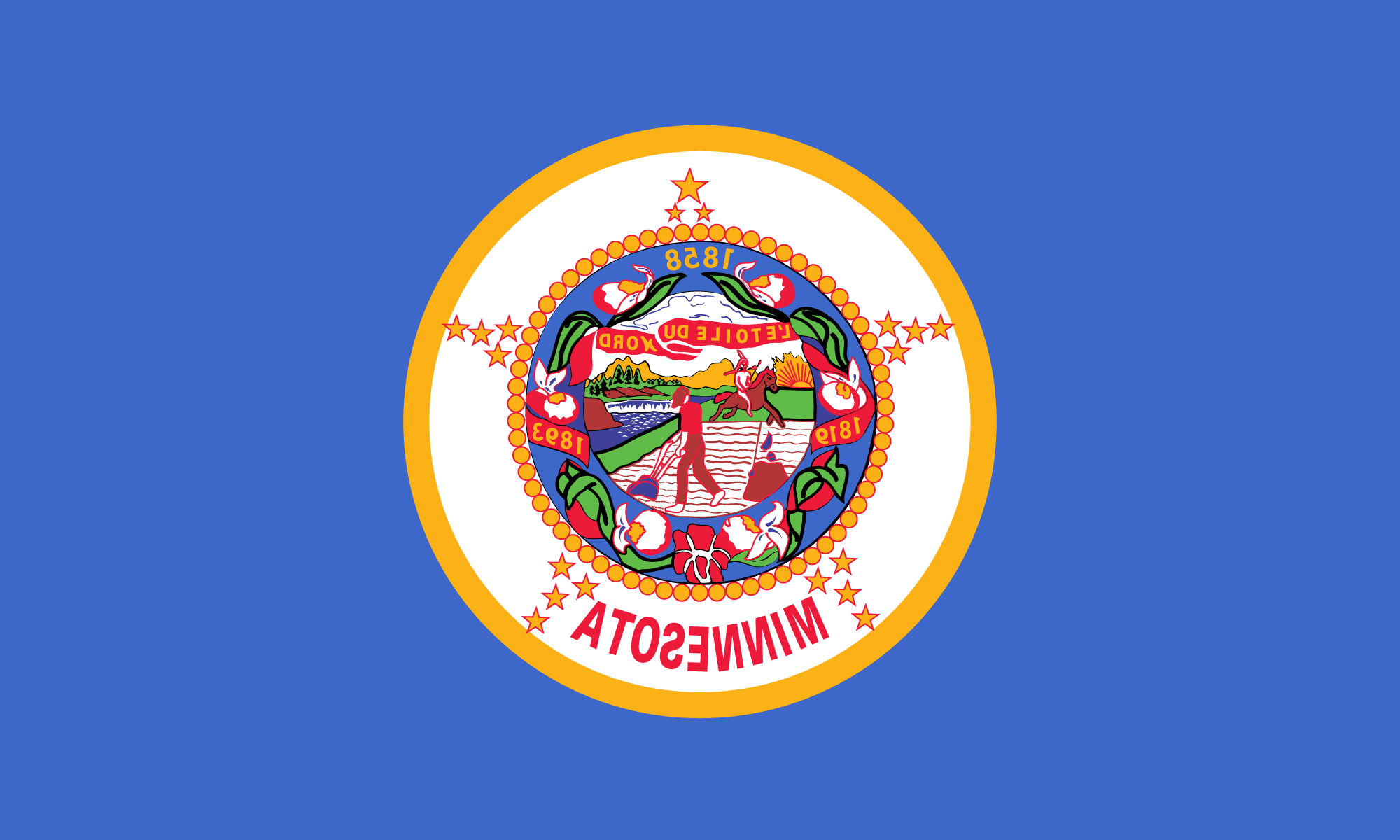Our flag depicts a white farmer displacing a Native American.
By Mark Grindy JULY 2, 2020 — 5:09PM
Do a quick Google image search for “racist state flags.” As of this writing, the top results belong to the Confederate States of America, Mississippi (featuring the Confederate emblem) and, you betcha, Minnesota.
In finally pulling down its flag this week, Mississippi is leaving Minnesota behind, and alone, on the list of states with flags that clearly and, yes, overtly represent white supremacy.
Mississippi’s flag relied on symbols to get the message across. Ours uses a cartoon. The center of Minnesota’s flag is the state seal, and the center of the seal depicts the scene of white farmer displacing a Native American. One plows the land the other called home.
For decades, the North Star Movement and others have been calling for change. In 2020, there can be no excuse for failing to listen and act, and take down the flag.
There are only a few reasons to raise a flag and keep it flying. It should set us apart. It should remind us of what we stand for. It should be a source of pride. At the very least, it should not be a tribute to white supremacy. But our flag fails on all accounts.
It doesn’t even have a distinctive design. As Roman Mars pointed out on stage at the TED conference, flag specialists have a pet name for banners like ours: SOBs, or “seals on a bedsheet.”
A few states with the same lack of imagination also slapped their seals on a blue field: Connecticut, Idaho, Indiana, Kansas, Kentucky, Maine, Michigan, Montana, Nebraska, Nevada, New Hampshire, New York, North Dakota, Oregon, Pennsylvania, South Dakota, Utah, Vermont, Virginia and Wisconsin.
The thing that makes the Minnesota flag stand out is you can find it by googling “racist state flags.”
Minnesota-born Duke University Prof. John Biewen explained it this way to Ira Glass of “This American Life:” “One place to see fake history — on a state flag of Minnesota.”
“It shows a white farmer behind a plow, tilling the soil. He’s looking up to watch an Indian ride away on a horse. In the original, he’s literally riding into the sunset,” Biewen said. “The Indian looks back at the white man. As far as you can tell, he’s leaving willingly.”
This is not an attempt to honor our heritage or history, but to erase it. The truth is, state-sponsored violence against people of color is not merely part of Minnesota history but central to it. If that sounds like exaggeration, just listen to “This American Life” and its account of “The Little War on the Prairie.”
In it, Biewen takes a road trip around Minnesota with Gwen Westerman — a professor at Minnesota State University, Mankato, and a member of the Dakota tribe. As they travel, Westerman leads Biewen through years, decades and generations of white settlers moving west and driving the Dakota from their homes using the same tactics of genocide that had proved so effective back east.
Growing up in Duluth, I learned the Trail of Tears went through Mississippi. I don’t remember learning the history Biewen and Westerman teach us, of Dakota families force-marched 150 miles along the Minnesota River, while “white people attacked them with rocks, clubs and knives.”
Whenever we fly our current flag, we insist this — and countless other atrocities — never happened at all.
Plenty of alternative designs have already been proposed. But we can decide on a replacement later. For now, we need to do the right thing, and take it down for good. Send your representatives an e-mail today. And while you’re at it, remind them we’re overdue for a new seal, too.
We can’t change our past. But we can face it. And we can start by retiring the flag that lies about it. Mississippi did it, fer cryin’ out loud. What’s our excuse?
Mark Grindy, of St Paul, is a senior director at the speechwriting and strategy firm West Wing Writers.





 Civil rights advocates objected to the seal for decades before the Legislature modified it in 1983. The Indian no longer flees westward into the setting sun. He rides south instead. Nevertheless, for many Minnesotans the seal’s original legacy is hard to forget.
Civil rights advocates objected to the seal for decades before the Legislature modified it in 1983. The Indian no longer flees westward into the setting sun. He rides south instead. Nevertheless, for many Minnesotans the seal’s original legacy is hard to forget.